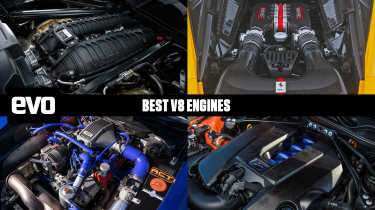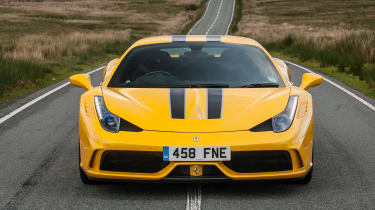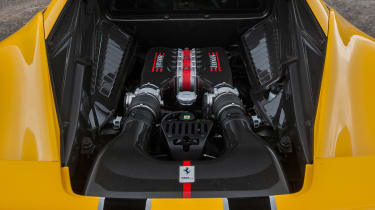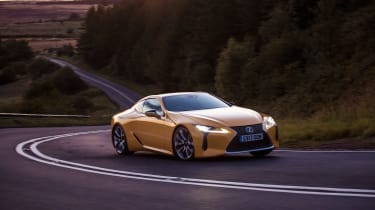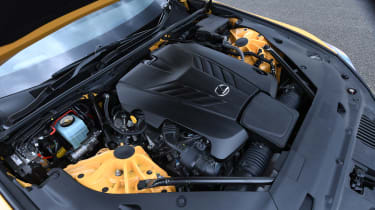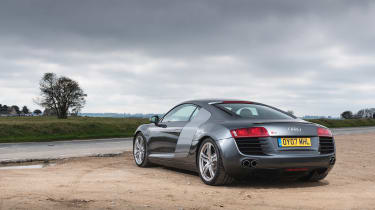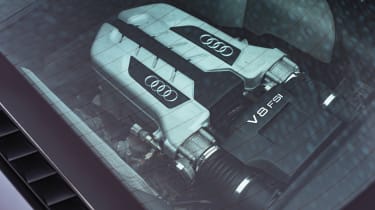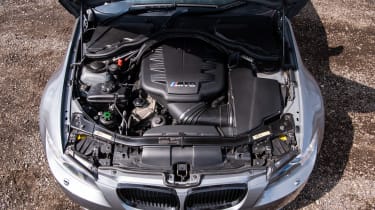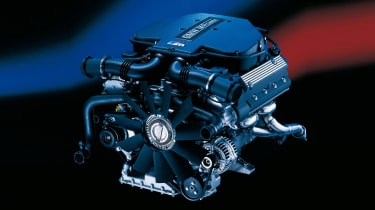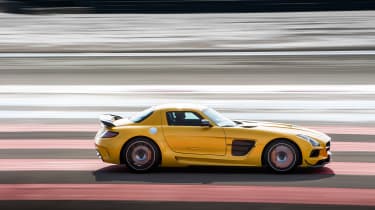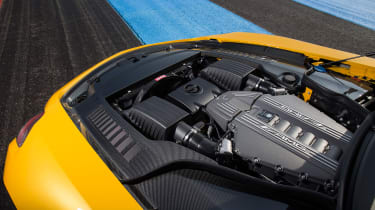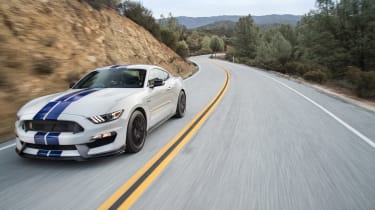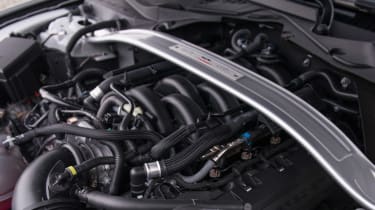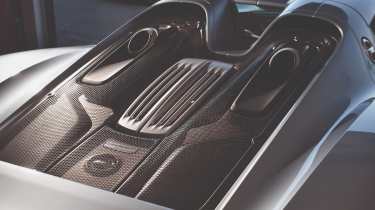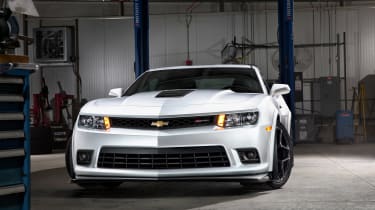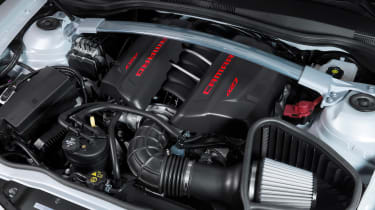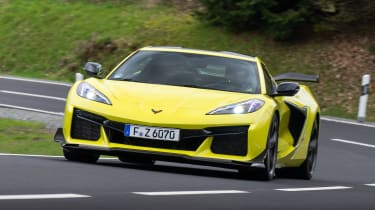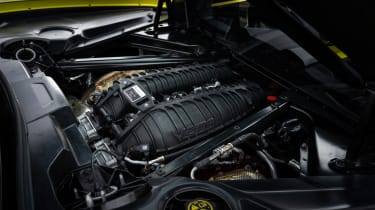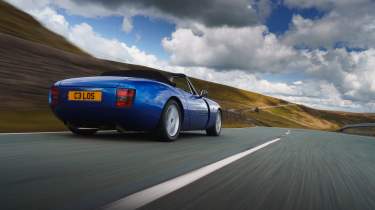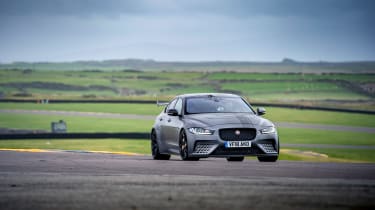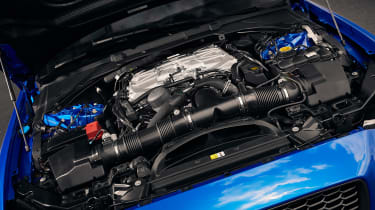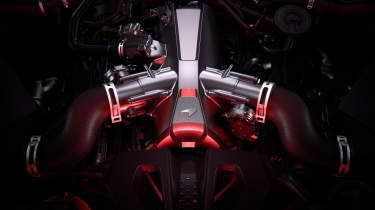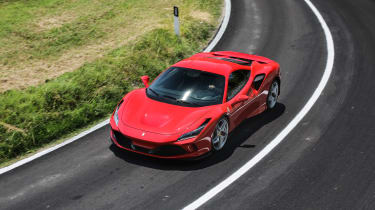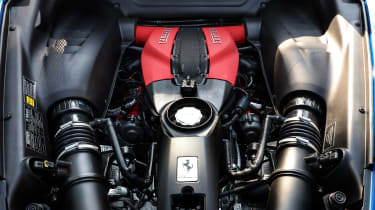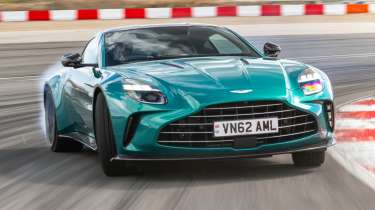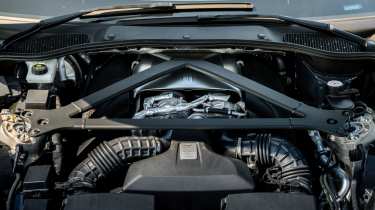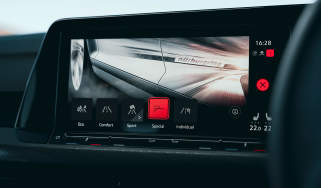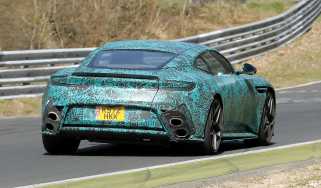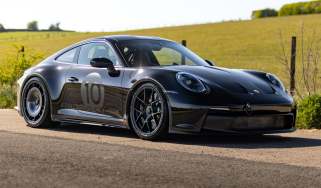Best V8 cars ever – from TVR’s burbling Rover V8 to the howling heart of Porsche’s 918
The V8 could be the most versatile performance car engine configuration, powering everything from Ferrari supercars to Ford pickups. These are our favourites
Back before downsizing and mass-turbocharging, the easiest way to make big power was adding displacement and cylinders. The V8 became the goldilocks format for performance that could be exotic enough to power supercars, but cheap enough to power everything from pick-up trucks to sports saloons.
There’s probably the most variety of engines that can be described as a V8, compared to any other layout and cylinder count – what exactly can the engines in a Ferrari 458 Speciale and a Ford F150 say they have in common, beyond cylinder counts? That, along with the fact that almost all of them have their charms – be that prodigious performance, a great sound or both – makes listing the best V8s an interesting challenge.
By best we mean our favourites, because if we’re talking about objective performance-based scoring, then the slightly numb BMW M twin-turbo V8 vastly out-ranks the howling naturally-aspirated 4-litre the marque only installed in the E9X-generation M3. And that would be criminal.
Equally, a plodding Ford Flathead from the ‘50s isn’t exactly up to modern evo era standards, important to the history of the V8 though it is. We’re also only covering road-going V8s strictly speaking, but Cosworth’s DFV deserves at least a mention here. So, this is a selection of V8s – and the best car they power – that best speak to The Thrill of Driving. The V8s that deliver it all. Power, yes, but also personality.
F136 – Ferrari 458 Speciale
The F136 engine, manufactured by Ferrari in Maranello, was actually first found under the bonnet of the Maserati Coupe in 2001, itself a mid-cycle update of the previous 3200GT. In that application, the wet-sump cross-plane V8 was noted for its rich tones, if not outright performance. The F136’s application in Ferraris was very different though, adopting a flat-plane crank and dry-sump lubrication for its first use in the F430 in 2004.
Upped to 4499cc in 2009 for the new 458 Italia, the F136’s peak form came four years later in the 458 Speciale, when power was lifted to 597bhp way up at 9000rpm. Not everyone was completely sold on the motorsport-style blare coming from the high-mounted exhausts, but its responsiveness and the savage way it flicked up the rev range made it the perfect partner in crime in one of Ferrari’s most memorable mid-engined models.
Specs: Ferrari 458 Speciale
4499cc, 90 degree V8
Dual overhead cams, 32 valve
Naturally aspirated, flat-plane crank
Power: 597bhp @ 9000rpm
Torque: 398lb ft @ 6000rpm
Also seen in: Ferrari 458 Italia, Ferrari F430, Ferrari California, Maserati Coupe, Maserati Gran Turismo, Alfa Romeo 8C
2UR-GSE – Lexus LC500
Japan might not be the first car manufacturing nation you would associate with V8s, but Lexus, and more specifically its parent company Toyota, have a knack at turning an otherwise dull engine into something rather special. The UR series of V8 engines is found across global Toyota and Lexus ranges in everything from limousines to Land Cruisers, but in 2UR-GSE form specifically, has turned into a wickedly charismatic V8 engine.
Used only in Lexus models, the 2UR-GSE’s heads were co-developed by Yamaha, who applied its expertise in both high-performance engineering and sound design to create a hugely satisfying naturally aspirated 4969cc unit that makes an incredible noise, even if it’s not actually that powerful. Its most recent application was in the brilliant LC500 sports coupe whose cultured bark matched its concept car looks.
Specs: Lexus LC500
4969cc, 90 degree V8
Dual overhead cams, VVT-i variable valve timing, 32 valve
Naturally aspirated
Power: 471bhp @ 7100rpm
Torque: 398lb ft @ 4800rpm
Also seen in: Lexus RC-F, Lexus GS-F, Lexus IS-F
4.2 FSi 32V – Audi R8 V8
Audi’s high-revving V8 engine was based on the existing 40-valve unit, but was comprehensively redesigned for use across the Audi range. As a result, it was available in two specifications – a ‘comfort’ version, and the high-performance example that was first used in the B7-generation RS4. Although there is not much exotic engineering within this engine, its inherent love of revs and sonorous timbre defined it as a brilliant V8 engine of its time.
It was also the first V8 engine to use Audi’s ‘Fuel Stratified Injection’ system derived from its dominant period of endurance racing, and when combined with the six-speed manual, made the 4.2 R8 of its time a real superstar against many rivals.
Specs: Audi R8 V8
4163cc, 90 degree V8
Dual overhead cams, variable valve timing, 32 valve
Naturally aspirated
Power: 414bhp @ 7800rpm
Torque: 317lb ft @ 5500rpm
Also seen in: Audi RS4 (B7), Audi RS4 (B8), Audi RS5 (8T)
S65 – BMW M3 (E92)
Where the Lexus and Audi units found above were closely related to more humdrum relatives, the S65 V8 was an entirely different entity from BMW’s other V8 engines. It was designed and developed by BMW’s M division exclusively for the E92 M3, and produced its 414bhp at 8300rpm.
The S65’s foundations were instead derived from the S85 V10 found in the larger M5, and so shared its basic cylinder dimensions, individual throttle bodies and double VANOS variable valve timing system. A larger and more powerful 4.4-litre version of the S65 was revealed for the limited-edition and astoundingly expensive M3 GTS. It was designed chiefly to increase low-rev torque, while not compromising on the standard 4-litre’s ability to rev.
Specs: BMW M3 (E92)
3999cc, 90 degree V8
Dual overhead cams, VANOS variable valve timing, 32 valve
Naturally aspirated, individual throttle bodies
Power: 414bhp @ 8300rpm
Torque: 295lb ft @ 3900rpm
Also seen in: Weismann MF4-S
S62 – BMW M5 (E39)
The BMW M division’s first V8 was called the S62 and found itself under the bonnet of the E39 M5, and later the BMW Z8 Roadster. Like the S65 above, the S62 featured individual throttle bodies, BMW M’s VANOS variable valve timing system and a semi-dry sump oil system, that used two scavenger pumps to limit oil starvation under hard cornering.
Despite sharing far more with the normal BMW M62 V8 already found in the 5- and 7-series, its larger 4941cc capacity and more aggressive internals yielded some impressive numbers for 1998, including breaking the 400 PS (394bhp) power barrier.
Specs: BMW M5 (E39)
4941cc, 90 degree V8
Dual overhead cams, VANOS variable valve timing, 32 valve
Naturally aspirated, individual throttle bodies
Power: 394bhp @ 6600rpm
Torque: 369lb ft @ 3800rpm
Also found in: BMW Z8, Ascari KZ1, Ascari A10
M159 – 2013 Mercedes-Benz SLS AMG Black Series
We could not have compiled this list without mention of an AMG V8, and it’s the M159 that was arguably the finest of them all. Noted for its large capacity – all 6208cc of it – the M159 yielded big torque numbers, but unlike most engines of its size still relished revs. Although it was closely related to more mainstream AMG V8s used in the C63 and E63, the M159 was bespoke to the SLS, dry-sumped, and in SLS Black Series form revved to an 8000rpm red line, some 800rpm higher than in the standard SLS.
It also featured a bespoke valvetrain, intake, headers and exhaust compared to the M156, and in the Black Series was the most powerful naturally aspirated engine up to that point regardless of cylinder count. And what does 6208 cubic centimetres of swept capacity sound like at 8000rpm? Like almost nothing else.
Specs: Mercedes-Benz SLS AMG Black Series
6208cc, 90 degree V8
Dual overhead cams, variable valve timing, 32 valve
Naturally aspirated
Power: 622bhp @ 7400rpm
Torque: 468lb ft @ 5000rpm
Also found in: Mercedes-Benz SLS Roadster, (M156) most Mercedes-AMG models between 2007 and 2013
Voodoo – 2015 Ford Shelby Mustang GT350R
Ford V8s have typically not been of exotic make-up or for use in hypercars, but the Voodoo is something rather different. Based on the same underlying engine design as the more common 5-litre Coyote V8, the Voodoo was designed specifically for the Shelby Mustang GT350, with a larger 5163cc capacity and a very unusual application of a flat-plane crank.
As a result, unlike most American V8s that have gone before, the Voodoo revs, and revs, with a muscle car-like low-rpm gurgle that keeps on going up to its 8250rpm red line. Torque is still strong, but this engine is all about the revs – an Amercian muscle car with a difference.
Specs: Ford Shelby Mustang GT350R
5163cc, 90 degree V8
Dual overhead cams, variable valve timing, 32 valve
Naturally aspirated, flat-plane crank
Power: 519bhp @ 7500rpm
Torque: 429lb ft @ 4750rpm
Porsche 918 Spyder
That talk of variety was no exaggeration, for we move from the relative barn-door engineering of the Rover V8, to the aerospace-grade Porsche M1800, better known to us as the 4.6-litre heart of the Porsche 918 Spyder hypercar.
Derived from the same architecture as the engine used in Porsche’s Sebring-winning RS Spyder LMP2 sports prototype, this compact, lightweight, incredibly highly-strung engine is an engineering marvel, using a chain drive and revving to 9200rpm. Designed to work in tandem with the 918’s arsenal of electric motors, this is an engine that willingly leans into its peaky nature, with the instant electric punch there to pick up the slack. The result is that the 918 has potency that suggests that the engine’s twice its actual size.
This engine was a one and done outing on the road but as a race engine, that’s a different story. It started life in the RS Spyder and went on to serve in an enlarged form in the 918. Well now, some two decades on from that first racer’s introduction, it’s back in twin-turbo form, in the 963 Le Mans hypercar.
Specs: Porsche 918 Spyder
4593cc, 90 degree V8
Dual-overhead cam, 32-valve
Naturally-aspirated,flat-plane crank
Power: 599bhp @ 8700rpm
Torque: 398lb ft @ 6700rpm
Also found in: Porsche RS Spyder (ish) and Porsche 963 (ish)
LS7 – Chevrolet Camaro Z/28
It wouldn’t be a list of V8s without the iconic General Motors LS. And the best of them all? The naturally aspirated, 427 cubic inch (or 7-litre to you and I) LS7, as was used sparingly throughout the GM range over a relatively short period. It’s part of the same iconic Chevrolet small-block engine family, and as such does without overhead cams, instead relying on pushrods, which although somewhat archaic, save on both space and complexity.
It might not seem cutting edge, but the LS7’s magic lies in its size, feeling effortless and yet still happy to rev with reasonable alacrity. It was first found in the C6 Corvette ZO6, and later in the brilliant Camaro Z/28, but it also found itself used in a limited-edition Holden Commodore called the W427, which shared its underlying ‘Zeta’ chassis with the Camaro.
Specs: Chevrolet Camaro Z/28
7008cc, 90 degree V8
Pushrod-actuated valvetrain, 16 valve
Naturally aspirated
Power: 498bhp @ 6100rpm
Torque: 481lb ft @ 4800rpm
Also found in: Chevrolet C6 Corvette ZO6, Holden Special Vehicles W427
LT6 – C8 Corvette Z06
The brief must have been relatively simple for the C8 Corvette Z06: ‘turn the Corvette into a Ferrari 458 Italia, for half the price, that we can mass produce’... probably. Because that’s what Chevrolet seemingly set out to do, benchmarking the 458 (the engineering team even bought a 458 Speciale engine online for stripdown and analysis) for its dual-overhead-cam, flat-plane-crank V8.
This monster of a machine seems to have arrived from another time period, without turbocharging and with an 8600rpm redline. As it stands, it’s the most powerful naturally-aspirated V8 ever put into production, being good for 661bhp. Those revs are an especially impressive achievement given its displacement. This is a full-bodied 5.5-litre animal, a litre bigger than the Ferrari mill this list opens up with – it’s still American, after all.
Happily, the car to which it’s attached is not just a great Corvette, but a great supercar. Only a lack of steering feel gets in the way of it being properly counted as equal to the finest of its European rivals.
Specs: C8 Corvette Z06
5463cc, 90 degree V8
dual overhead cams, 32 valve
Naturally-aspirated, flat-plane crank
Power: 661bhp @ 8400rpm
Torque: 460lb ft @ 6300rpm
Also found in: Nothing else
Rover V8 – TVR Griffith
You can’t talk about V8s without a true British great (that was first American) – the Rover V8. Quite unlike the freshly-hewn Corvette engine above, the Rover V8 was built from the bones of an all-alloy engine that General Motors abandoned in the early 1960s. It went on to serve in Rovers, Range Rovers, TVRs, Triumphs and so much more, all the way into the mid-2000s.
Why did GM abandon it? Well, it was expensive to build and proved a bit too unreliable, but J. Bruce McWilliams of Rover saw its potential, buying up the rights and adapting it for first use in the Rover P5. The rest is history, with the likes of TVR and Marcos stretching it beyond all recognition for high-performance use, the Griffith utilising a 5-litre, 340bhp version of the engine with a 90mm stroke. Rover V8s, especially in TVRs, are beloved for their fulsome torque offering and burbling soundtrack. A version of this engine was also used in the crazy Bowler Wildcat of the early 2000s.
Antiquity eventually caught up with the Rover V8, its low efficiency and relatively low output impressive by the standards of DOHC engines that were appearing on the European scene in the late 1990s and early 2000s. Chevrolet still managed to make a pushrod V8 work in terms of power, performance and fuel use, though. Could the Rover mill have been re-engineered to live a longer life of its own? Maybe, though doing so would surely have expedited MG-Rover’s circling of the pan.
Specs: TVR Griffith 500
4997cc, 90 degree V8
Single-cam, 16-valve
Naturally-aspirated, cross-plane crank
Power: 340bhp
Torque: 350lb ft
Also found in: Rovers, Range Rovers, MGs, TVRs, Morgans and more
AJ133 – Jaguar XE SVR Project 8
Jaguar’s sonorous, supercharged petrol V8 has been found in various models since 2009 when it was first fitted to the XKR and XF-R saloon, but over the past ten years has slowly transformed into the brilliant AJ133 that currently resides in its most potent form under the carbonfibre bonnet of the XE Project 8.
As the only supercharged V8 in this round-up, its typical combination of instant boost and that telltale whine still appeals deeply, and gives the AJ133 a unique edge in the turbocharger-dominated supersaloon sector.
Specs: Jaguar XE SVR Project 8
5000cc, 90 degree V8
Dual overhead cams, 32 valve
TVS Supercharger
Power: 592bhp @ 6500rpm
Torque: 516lb ft @ 3500rpm
Also found in: Jaguar XKR (post 2009), Jaguar XF-R (post 2009), Jaguar F-type R/SVR, Land Rover/Jaguar SVO products
M840T – McLaren 750S
McLaren’s Ricardo-built V8 has always conjured conflict among the evo team. There’s no argument around its potency: whether in a lowly 540C junior supercar, or in the track monster Senna with near-on 800bhp, it’s a barrel-chested, full-bodied thing to dig your right foot into. It’s also often old-school in its delivery, requiring revs and giving a genuine sense of ‘coming on boost’, quite unlike the rival mill from Ferrari with its closely managed boost-by-gear power delivery. The biggest bone of contention in the past has however been personality. This is a gruff, industrial engine without the nuance to its vocals and personality that Ferrari managed to extract from its F154.
But in the 750S, McLaren did great work on the exhaust and on how the engine is mounted to the car, to enhance the sound and the sensations that are coming through to the driver. It worked, by and large. Iteration has enhanced what was a brutally effective powerplant into one that stimulates as its unrelenting surge climbs towards the redline. It’s no Speciale, no GT350, no C8 Z06, but the 750S and its M840T are mighty. Honestly, it has us excited for what the W1’s MHP8 engine, good for over 9000rpm, will be like.
Specs: McLaren 750S
4593cc, 90 degree V8
Dual-overhead cam, 32-valve
Naturally-aspirated,flat-plane crank
Power: 740bhp @ 7500rpm
Torque: 590lb ft @ 5500rpm
Also found in: McLaren 720S, McLaren 765LT, McLaren Senna, McLaren Elva, McLaren Speedtail, McLaren GT, McLaren GTS
F154 – Ferrari F8 Tributo
And so we arrive at our final engine. A habitual International Engine of the Year winner, the F154 is that powered the F8 Tributo was Ferrari’s first go at turbocharging when it debuted in the California T, and boy did it get it right. After a few updates and iterations, the F154’s ‘tailored’ torque mapping for each transmission was a masterstroke in maintaining the build of torque that is so often lost in turbocharged engines.
It’s the Ferrari’s response that so perfectly compounds its astounding capability. Many turbocharged V8 engines hit hard, but none does so with the finesse or intensity of the Ferrari F154. It might lack the serrated edge and piercing noise of the best flat-plane Ferrari V8s that came before, but the pay-off is the raw speed the car it’s in is then capable of.
Specs: Ferrari F8 Tributo
3902cc, 90 degree V8
dual overhead cams, 32 valve
twin-turbo, flat-plane crank
Power: 710bhp @ 8000rpm
Torque: 568lb ft @ 3250rpm
Also found in: Ferrari 488 GTB, Ferrari 488 PIsta, Ferrari GTC4 Lusso T, Ferrari California T, Ferrari Portofino
Mercedes-AMG M177 – 2025 Aston Martin Vantage
Coming off the back of the M156 and M159, the M177 Mercedes-AMG V8 had an uphill battle ahead of it: that of convincing AMG fans drunk on the outgoing all-AMG naturally-aspirated 6.2, that a turbocharged V8 that was once again ‘just’ a tuned Mercedes engine, rather than AMG-bespoke, could bring the charisma. Perhaps unsurprisingly, the M177 wasn’t a match for the big-banger. But for a downsized, turbocharged lump, it was really bloody good, with a lovable sound and personality BMW’s 4.4-litre couldn’t hope to match.
Which is odd because conceptually, it’s very similar to the BMW engine. It used a hot V, placing the turbochargers between the V of the engine to shorten the air inlet distance and therefore, improve responses. The excellent noise was maintained because Mercedes-AMG paid extra special attention to the tuning of the exhaust, with active flaps and acoustically-refined chambers to give it the essential AMG rumble.
In its initial applications it was available in 467bhp (C63 and AMG GT) and 510bhp (C63 S and AMG GT S) forms. In the AMG GT it was called the M178, due to being dry-sump lubricated in Mercedes-AMG’s sport’s car. This engine was always built for more and so, outputs over 600bhp and even over 700bhp, have been offered in production cars, from both Mercedes-AMG and Aston Martin, who bought into it early on and have been using it for almost eight years.
Oddly enough, apart from the early C63s and AMG GTs to which it’s fitted, which don’t have petrol particulate filters, it’s the latest Aston Martin Vantage that seems to be where Mercedes-AMG’s V8 does its best work. Aston were let loose with this engine for the latest generation of cars. With permission to crack the mill open, it added revised heads, cams, inlets, exhausts and turbochargers, for a monstrous 656bhp – 153bhp more than the car it replaced and 200bhp more than the original AMG GT’s lump produced. It’s an anabolic powerplant in a properly punchy car.
Specs: Aston Martin Vantage
3982cc, 90 degree V8
dual overhead cams, 32 valve
twin-turbo, cross-plane crank
Power: 656bhp @ 6000rpm
Torque: 590lb ft @ 2000rpm
Also found in: Numerous ‘63 AMG’ Mercedes, Aston Martin Vantage, DB11, DB12, DBX
